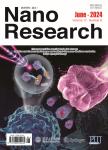Microscopic mechanism of imprint in hafnium oxide-based ferroelectrics
作者机构:Key Laboratory of Microelectronic Devices and Integrated TechnologyInstitute of MicroelectronicsChinese Academy of SciencesNo.3Beitucheng West RoadBeijing 100029China University of Chinese Academy of Sciences19 Yuquan RoadBeijing 100049China School of Integrated CircuitsSchool of Optical and Electronic InformationHuazhong University of Science and Technology1037 Luoyu RoadWuhan 430074China Key Laboratory of Polar Materials and Devices(MOE)Department of ElectronicsEast China Normal University100 Guilin RoadShanghai 430079China Department of Mathematics and TheoriesPeng Cheng LaboratoryNo.2Xingke 1st StreetShenzhen 518055China
出 版 物:《Nano Research》 (纳米研究(英文版))
年 卷 期:2022年第15卷第4期
页 面:3667-3674页
核心收录:
学科分类:08[工学] 0805[工学-材料科学与工程(可授工学、理学学位)] 0703[理学-化学] 0702[理学-物理学]
基 金:This work was supported in part by the the National Natural Science Foundation of China(Nos.61974049,61922083,61804167,61834009,61904200,61821091,and 92064003) in part by the Strategic Priority Research Program of the Chinese Academy of Sciences(No.XDB44000000).
主 题:hafnia-based ferroelectric imprint build-in electric field oxygen vacancy recovery
摘 要:Hafnia-based ferroelectrics have greatly revived the field of ferroelectric memory(FeRAM),but certain reliability issues must be satisfactorily resolved before they can be widely applied in commercial memories.In particular,the imprint phenomenon severely jeopardizes the read-out reliability in hafnia-based ferroelectric capacitors,but its origin remains unclear,which hinders the development of its recovery schemes.In this work,we have systematically investigated the imprint mechanism in TiN/Hf_(0.5)Zr_(0.5)O_(2)(HZO)/TiN ferroelectric capacitors using experiments and first-principles calculations.It is shown that carrier injection-induced charged oxygen vacancies are at the heart of imprint in HZO,where other mechanisms such as domain pinning and dead layer are less important.An imprint model based on electron de-trapping from oxygen vacancy sites has been proposed that can satisfactorily explain several experimental facts such as the strong asymmetric imprint,leakage current variation,and so forth.Based on this model,an effective imprint recovery method has been proposed,which utilizes unipolar rather than bipolar voltage inputs.The remarkable recovery performances demonstrate the prospect of improved device reliability in hafnia-based FeRAM devices.



